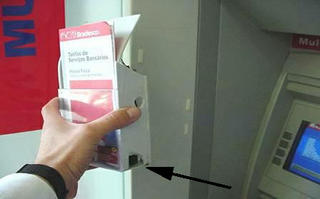Nature may abhor a vacuum, but a vacuum abhors a mess. In the absence of air, a droplet of liquid can crash into a smooth surface without splattering, report physicists Lei Xu, Sidney Nagel, and colleagues at the University of Chicago, Illinois.
“I was very surprised to see [the splash] go away and this beautiful smooth spreading of the droplet emerge as the air pressure was reduced,” says Mark Robbins, a theorist at Johns Hopkins University in Baltimore, Maryland. Robbins says he would have assumed that the splashing depended on the properties of the liquid alone.
The splash spits out a ring of smaller droplets, and Xu and Nagel were studying their sizes and speeds when they discovered that pumping away the surrounding air eliminated the splash altogether. Within a tall vacuum chamber, the researchers released droplets of alcohol from various heights onto a dry glass plate. They recorded the resulting splashes with a high-speed video camera as they varied the pressure in their apparatus, Nature may abhor a vacuum, but a vacuum abhors a mess. In the absence of air, a droplet of liquid can crash into a smooth surface without splattering, report physicists Lei Xu, Sidney Nagel, and colleagues at the University of Chicago, Illinois.
“I was very surprised to see [the splash] go away and this beautiful smooth spreading of the droplet emerge as the air pressure was reduced,” says Mark Robbins, a theorist at Johns Hopkins University in Baltimore, Maryland. Robbins says he would have assumed that the splashing depended on the properties of the liquid alone.
The splash spits out a ring of smaller droplets, and Xu and Nagel were studying their sizes and speeds when they discovered that pumping away the surrounding air eliminated the splash altogether. Within a tall vacuum chamber, the researchers released droplets of alcohol from various heights onto a dry glass plate. They recorded the resulting splashes with a high-speed video camera as they varied the pressure in their apparatus, sucking it down as low as 1% of atmospheric pressure. The droplets struck the surface with speeds ranging from 2 to 7 meters per second, and for a given speed, the researchers found they could suppress the splash by lowering the pressure below a specific threshold.

The researchers explain the results with a simple theory. As a drop strikes the surface, liquid spreads sideways at supersonic speed, creating a shock wave.The shockwave pushes back on the liquid, and if that force is greater than the internal forces holding the liquid film together, the shock wave lifts it off the surface and creates a splash. Reducing the pressure reduces the force the shock wave exerts.
Ironically, the theory predicts that a thicker liquid should splash more easily than a thinner one. The researchers tested this prediction by dropping three types of alcohol with different viscosities. As predicted, the more viscous the alcohol, the lower the pressure needed to prevent splashing, the researchers reported. They also confirmed that a weighty gas such as krypton produced splashes at lower pressure than a lighter gas such as helium did.
“It’s just the sort of thing all physicists should do,” saysWalter Goldburg, an experimenter at the University of Pittsburgh, Pennsylvania.
“They spotted a nonintuitive phenomenon and pursued it” to a complete understanding. Xu and Nagel speculate that the odd phenomenon could make a splash with technologists, as it might be used to control splatter in industrial processes such as spray coating and inkjet printing.





